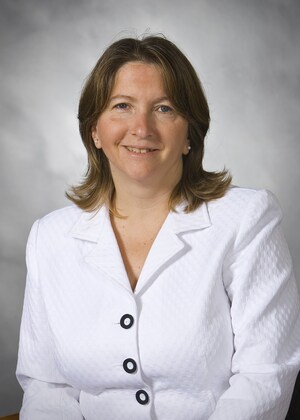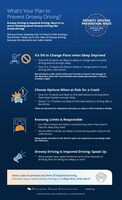What is Good Quality Sleep? National Sleep Foundation Provides Guidance
WASHINGTON, Jan. 23, 2017 /PRNewswire-USNewswire/ -- The National Sleep Foundation (NSF) recently released the key indicators of good sleep quality, as established by a panel of experts.
Given the precipitous increase in the use of sleep technology devices, the key findings are timely and relevant. This information complements the data these devices provide, helping millions of consumers interpret their sleep patterns. The report comes as the first step in NSF's effort to spearhead defining the key indicators of good sleep quality. They key determinants of quality sleep are included in a report published in Sleep Health. They include:
- Sleeping more time while in bed (at least 85 percent of the total time)
- Falling asleep in 30 minutes or less
- Waking up no more than once per night; and
- Being awake for 20 minutes or less after initially falling asleep.
Multiple rounds of consensus voting on the determinants led to the key findings, which have since been endorsed by the American Association of Anatomists, American Academy of Neurology, American Physiological Society, Gerontological Society of America, Human Anatomy and Physiology Society, Society for Research on Biological Rhythms, Society for Research of Human Development, and Society for Women's Health Research.
Max Hirshkowitz, PhD, DABSM, Chairman of the Board of Directors of the NSF stated, "Millions of Americans are sleep technology users. These devices provide a glimpse into one's sleep universe, which is otherwise unknown. The National Sleep Foundation's guidelines on sleep duration, and now quality, make sense of it all—providing consumers with the resources needed to understand their sleep. These efforts help to make sleep science and technology more accessible to the general public that is eager to learn more about its health in bold new ways."
Notably, NSF's recent Sleep Health Index® revealed that as many as 27 percent of people take longer than 30 minutes, on average, to fall asleep. With wider use of sleep technology and the context provided by NSF's guidelines, consumers can better gauge and even improve their sleep. Furthermore, NSF's recommendations are instrumental to the continued development of such consumer technologies. The report also highlights areas where research is needed to identify and further delineate additional indicators of good sleep quality across age groups.
"In the past, we defined sleep by its negative outcomes including sleep dissatisfaction, which were useful for identifying underlying pathology. Clearly this is not the whole story. With this initiative, we are now on a better course towards defining sleep health," noted Maurice Ohayon, MD, DSc, PhD, Director of the Stanford Sleep Epidemiology Research Center.
To learn more about the results of the report, visit sleephealthjournal.org. To learn more about NSF's efforts in sleep technology, visit the NSF SleepTech webpage.
About the National Sleep Foundation
The National Sleep Foundation is dedicated to improving health and well-being through sleep education and advocacy. Founded in 1990 by the leaders in sleep medicine, NSF is the trusted resource for sleep health, and science, to patients with sleep problems, as well as the general public. For more information, visit sleepfoundation.org or sleep.org. Follow us on Facebook and Twitter.
SOURCE National Sleep Foundation
Related Links
WANT YOUR COMPANY'S NEWS FEATURED ON PRNEWSWIRE.COM?
Newsrooms &
Influencers
Digital Media
Outlets
Journalists
Opted In






Share this article